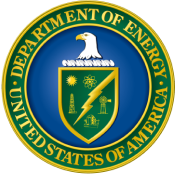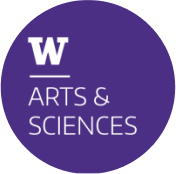We present a digital quantum computation of two-hadron scattering in a Z2 lattice gauge theory in 1+1 dimensions. We prepare well-separated single-particle wave packets with desired momentum-space wavefunctions, and simulate their collision through digitized time evolution. Multiple hadronic wave packets can be produced using the systematically improvable algorithm of this work, achieving high fidelity with the target initial state, and demanding only polynomial resources in system size. Specifically, employing a trapped-ion quantum computer (IonQ Forte), we prepare up to three meson wave packets\ using 11 and 27 system qubits, and simulate collision dynamics of two meson wave packets for the smaller system. Despite noise effects, post-processing with a global-symmetry-based noise mitigation yields results consistent with numerical simulations, but decoherence limits evolution into long times. We demonstrate the critical role of high-fidelity initial states for precision measurements of state-sensitive observables, such as S-matrix elements and decay amplitudes. While we have not established quantum advantage by this early hardware demonstration, our algorithms are general, and our findings imply the potential of quantum computers in simulating scattering processes in strongly interacting gauge theories.
Quantum-emulator and quantum-hardware computations of this work were enabled by access to IonQ systems provided by the University of Maryland’s National Quantum Laboratory (QLab). We thank support from IonQ scientists and engineers, especially Daiwei Zhu, during the execution of our runs. We further thank Franz Klein at QLab for the help in setting up access and communications with IonQ contacts. S.K. acknowledges valuable discussions with Roland Farrell and Francesco Turro. This work was enabled, in part, by the use of advanced computational, storage and networking infrastructure provided by the Hyak supercomputer system at the University of Washington. The numerical results in this work were obtained using Qiskit [204], ITensors [205], Julia [206] and Jupyter Notebook [207] software applications within the Conda [208] environment.
Z.D. and C-C.H. acknowledge support from the National Science Foundation’s Quantum Leap Challenge Institute on Robust Quantum Simulation (award no. OMA-2120757); the U.S. Department of Energy (DOE), Office of Science, Early Career Award (award no. DESC0020271); and the Department of Physics, Maryland Center for Fundamental Physics, and College of Computer, Mathematical, and Natural Sciences at the University of Maryland, College Park. Z.D. is further grateful for the hospitality of Nora Brambilla, and of the Excellence Cluster ORIGINS at the Technical University of Munich, where part of this work was carried out. The research at ORIGINS is supported by the Deutsche Forschungsgemeinschaft (DFG, German Research Foundation) under Germany’s Excellence Strategy (EXC-2094—390783311). S.K. acknowledges support by the U.S. DOE, Office of Science, Office of Nuclear Physics, InQubator for Quantum Simulation (IQuS) (award no. DE-SC0020970), and by the DOE QuantISED program through the theory consortium “Intersections of QIS and Theoretical Particle Physics” at Fermilab (Fermilab subcontract no. 666484). This work was also supported, in part, through the Department of Physics and the College of Arts and Sciences at the University of Washington.


